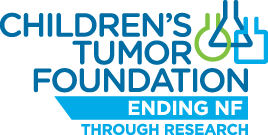From a study of tumors of 501 glioma patients from across the United States, Bredel et al.* have found that tumor growth may be principally regulated by mutations in a small number of master-level ‘hub’ genes including EGFR and MYC. The hub genes then communicate with a larger hierarchy of ‘glioma genes’ all with cooperating signaling pathways. Furthermore, the mutations that lead to malfunction of these genes appear to be non-random, which is to say, they occur with a certain pattern. The take-home message from this extensive study and complex data set is that glioma tumor growth is likely to implicate multiple signaling pathways and that therefore these tumors are likely to require dual therapy regimes (two different drugs given together) that target more than one cell signaling element at a time. This provides further support for the general progression of tumor drug regimes towards combination therapies, which we reported earlier this year from both ASCO and the 2009 NF Conference. * Bredel, Scholtens, Harsh et al.(2009) A Network of a Cooperative Genetic Landscape in Brain Tumors. JAMA, July 15.
News & Apps
Resources & Policies
© 2025 Children's Tumor Foundation. All rights reserved. Website Credits & Support Terms Privacy Policy Accessibility Statement

